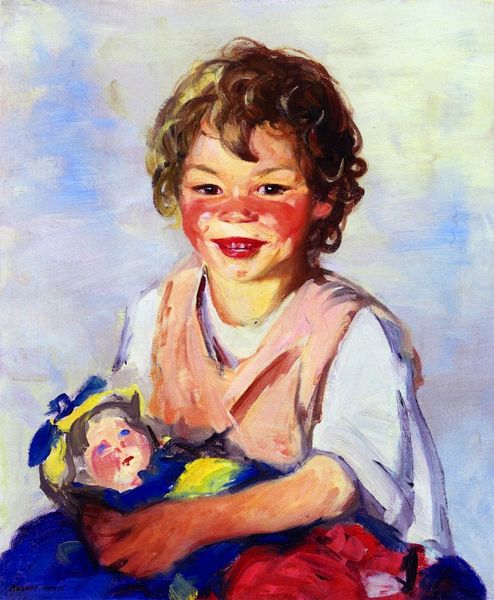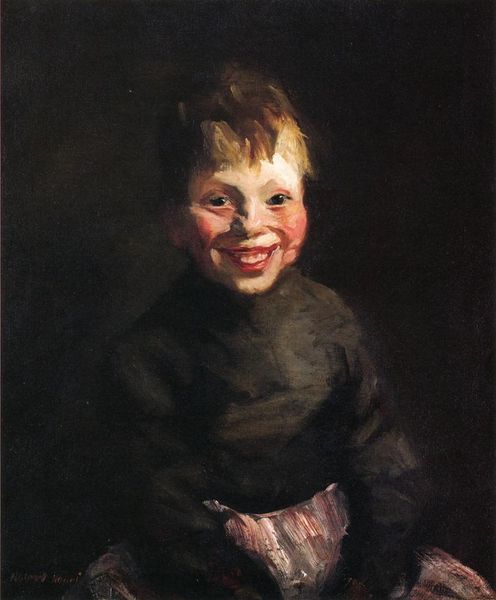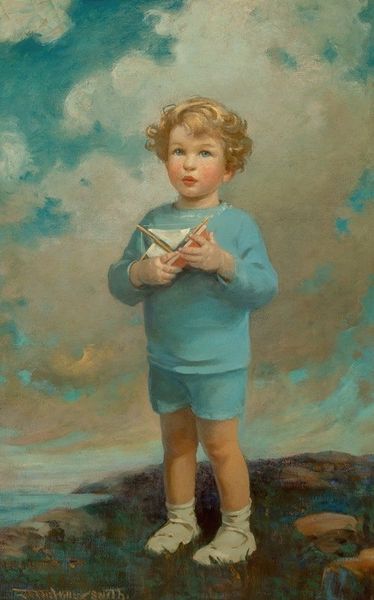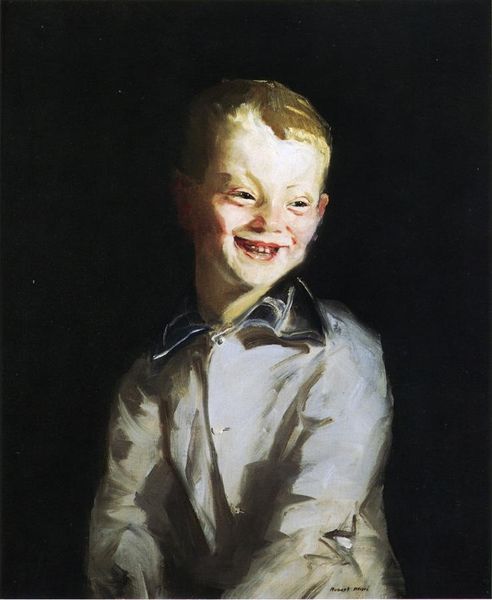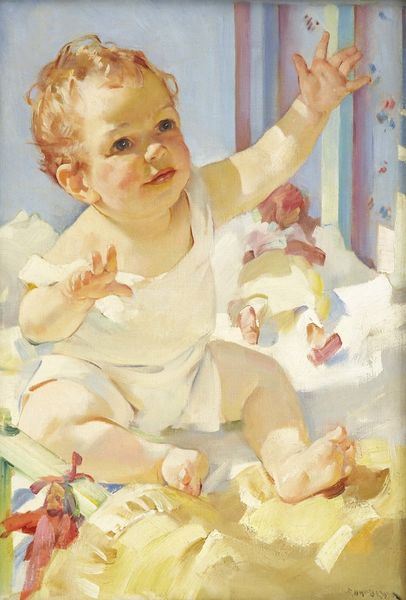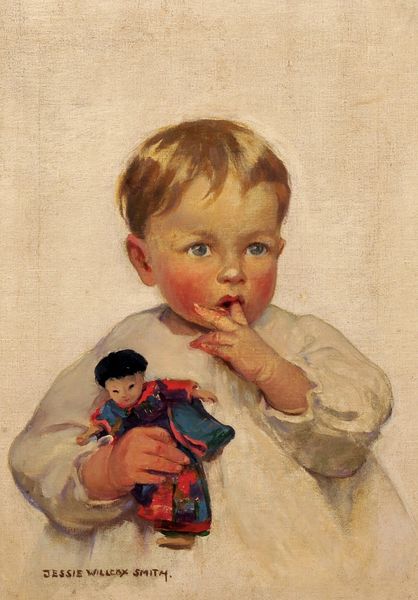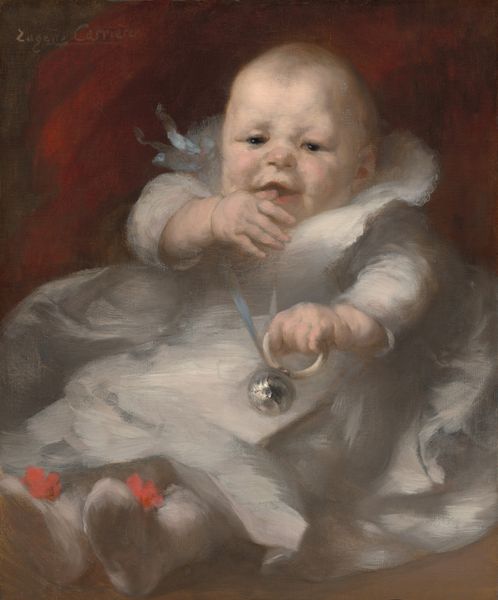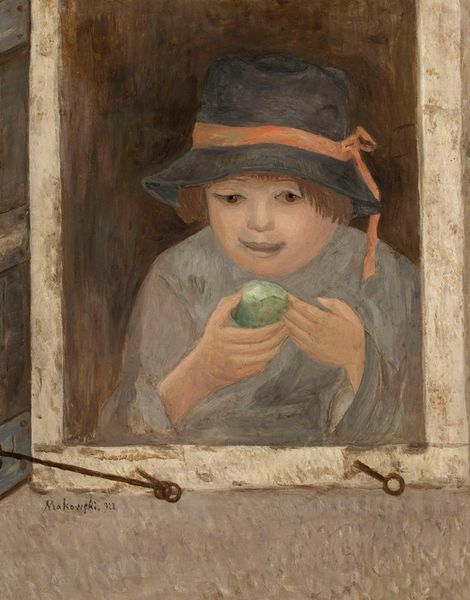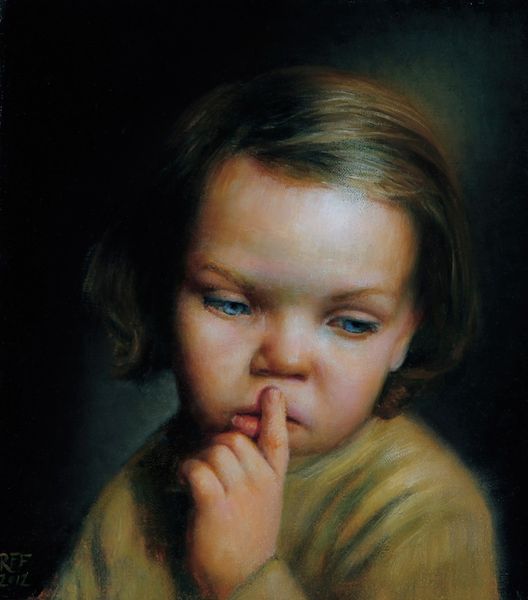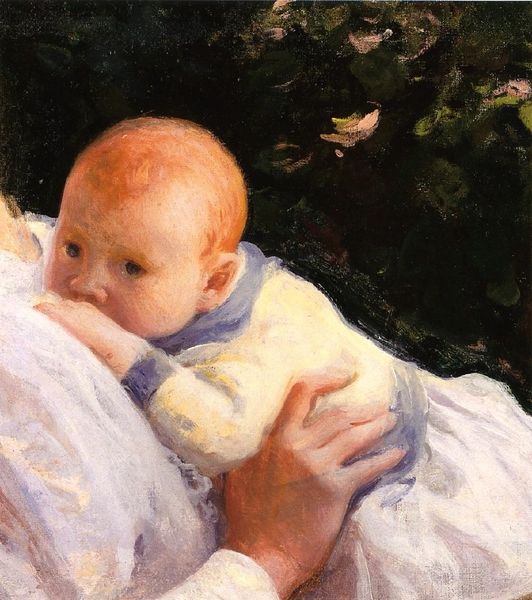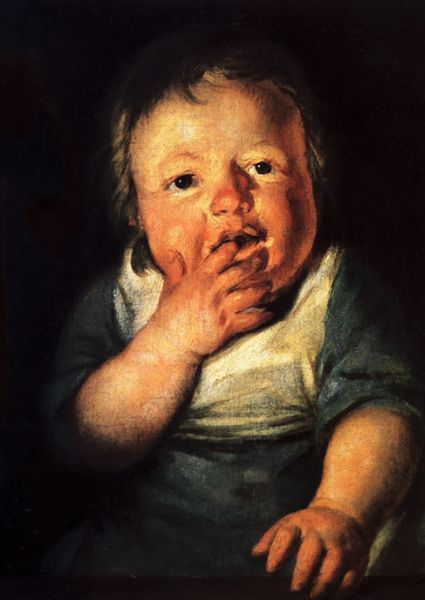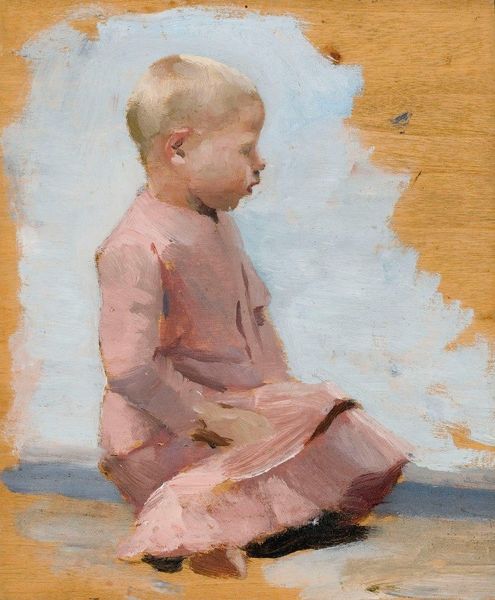
#
possibly oil pastel
#
oil painting
#
child
#
underpainting
#
animal portrait
#
animal drawing portrait
#
portrait drawing
#
facial portrait
#
portrait art
#
fine art portrait
#
digital portrait
Dimensions: 68.58 x 63.5 cm
Copyright: Public domain
Editor: Here we have George Luks' "Child with a Toy," painted in 1919, location currently unknown. I'm immediately struck by its warmth; the limited palette almost glows. What are your initial thoughts on this portrait? Curator: This piece speaks volumes about the changing social landscape of the early 20th century. Luks, associated with the Ashcan School, often depicted everyday urban life. Does this seem like a typical society portrait to you? Editor: Not at all. It feels much more intimate and real, far from the formal portraits of the wealthy. It almost feels like a social commentary. Curator: Exactly! By choosing a child with an ordinary toy, Luks challenges the conventions of portraiture. The toy itself—likely inexpensive—emphasizes a different social reality than the gilded objects seen in upper-class portraits. Consider the date too - 1919 - this is a post-war image, what statements might Luks be making? Editor: You’re right. Post-war America would definitely be rethinking its values, and a painting like this sort of democratizes portraiture, showing the beauty in everyday life, a kind of post war humanism, in a way. Curator: Precisely. The warm colors also soften any harsh social critique. He's not necessarily condemning, but observing and humanizing a segment of society often overlooked in art. It raises the status of everyday children to art worthy individuals. Do you see Luks’ choice as politically charged or merely socially aware? Editor: I think it's both. Highlighting these realities is inherently political, even if subtly so. The choice of subject and style, combined with the period, transforms the painting from a simple depiction to a wider commentary. It seems to show that art and artists have the capability to promote cultural change. Curator: And this piece certainly made me re-evaluate how art reflects society’s shifting values and what we consider worthy of artistic representation. Editor: Me too! This really underlines the importance of context when we look at any work.
Comments
No comments
Be the first to comment and join the conversation on the ultimate creative platform.
